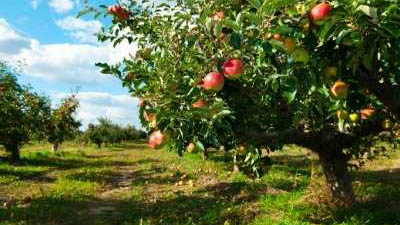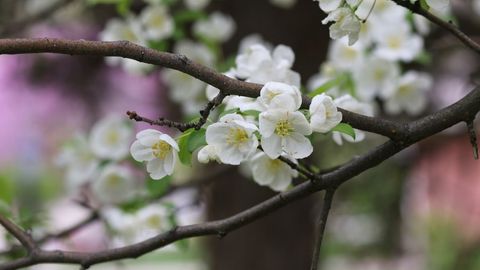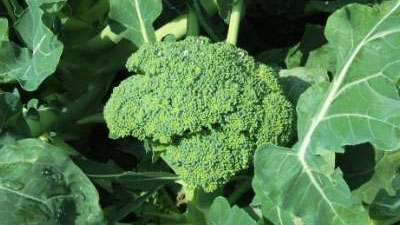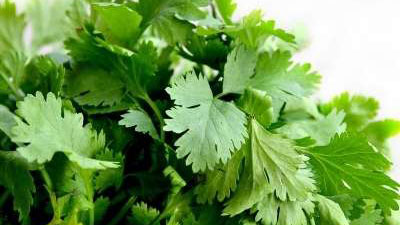How to Grow Hops in Your Garden
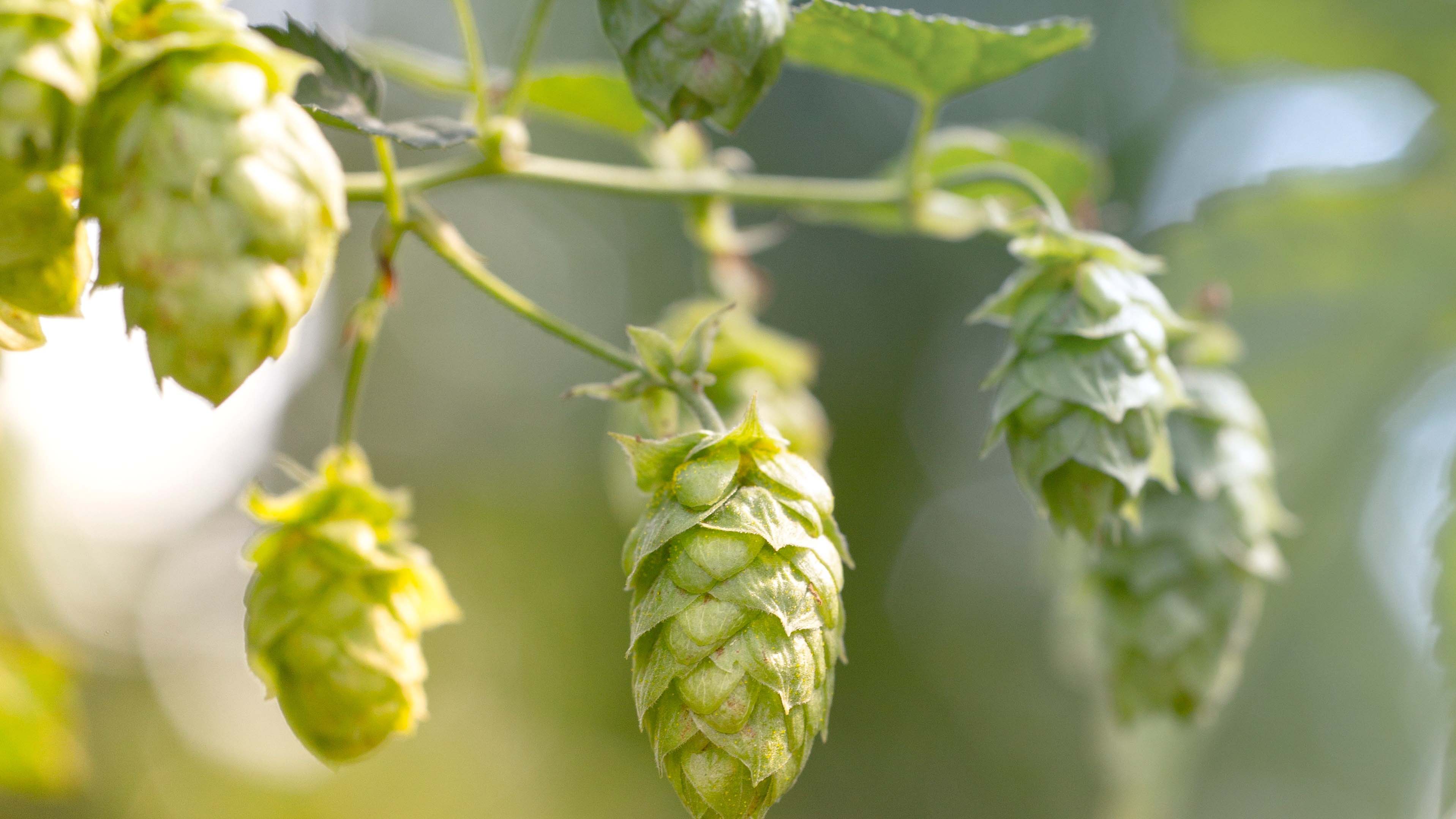
Hops are a perennial plant that can be harvested for many years. Growing hops is relatively easy if plants are grown in soil rich in organic matter and provided with sufficient vertical space for vine extension. Hops are a vigorous growing vine that requires a long growing season and full sun. Hops are propagated from an underground stem planted in the spring after the danger of frost has past. The part of the plant that is used to brew beer is the cone, from the female plant. By purchasing and planting female plants, large seedless cones are produced. Cones are harvested in late August to early September and are ready for use once they are dried and become brittle and papery.
Hop Varieties
When choosing hops plant it is important to select the right variety and purchase female plants. Selection depends on where you live and whether you want bittering or aroma varieties. American varieties like Galena, Mt. Hood, and Cascade grow best in Utah; European varieties don’t have the flavor or aroma when they are grown in the United States.
| Bittering Types | Aroma Types |
|---|---|
| Galena - most popular bittering hop (acid content of 11-13%) | Mt. Hood - medium vigor, improved yields (acid content of 3-4.5%) |
| Nugget - stores well, late to mature (acid content of 11- 113%) | Tettnanger - early to mature (acid content of 4-5.5%) |
| Cascade - early to mature, floral and spicy aroma (acid content of 5-7%) |
How to Grow Hops
Where to Grow
Plant hops where there is space to grow the 20-30 foot long vine. Often a trellis is built to support the plant. Other areas can be on the side of a garage, up a chimney, or on a tall, long fence. Hops require full sun (12 hours), good air circulation, and well-drained soil for high productivity.
Soil and Soil Preparation
Soil drainage is important, so a loose loam to a sandy loam (pH 6-7.5) is best. Before planting, determine fertilizer needs with a soil test and then follow the recommendations given with the test report. If fertilizer applications are warranted, work the fertilizer into the top 6 inches of soil. If you fertilize with compost, apply no more than 1 inch of well-composted organic matter per 100 square feet of garden area.
Planting
Plant no later than mid-April in warm areas and mid-May in cooler areas of Utah. Dig a narrow trench 12 inches deep and slightly longer then the rhizome. Plant one rhizome per hill with the buds pointed up and cover with 1 inch of loose soil. Space the rhizomes 5 feet apart and mulch the soil heavily. Mulch will aid in weed control and help conserve soil moisture.
Fertilization
Amend the soil with additional compost each spring and side dress with some additional nitrogen at ½-1 tablespoon (21-0-0) per plant in June
Growth and Training
From each rhizome, several shoots will emerge. When the vines are about 1 foot long, choose the 2-3 most vigorous shoots to grow and remove all remaining shoots. As the shoots elongate, train them onto the support structure by winding them in a clock wise direction, which follows their natural growth habit. Space out the vines as you train them to improve air circulation, light penetration into the canopy, and help prevent diseases. Hops vines grow quickly and will grow side branches when the plants reach 20 ft. long. These side shoots produce the cones that are later harvested.
Hop Diseases and Insects
| Disease | Symptom | Control |
|---|---|---|
| Mildew | Growing vines darken, wilt and die. Associated with cool, wet weather. | Increase air circulation through vine pruning. |
| Insects | Identification | Control |
|---|---|---|
| Aphids | Green or black soft-bodied insects that feed on underside of leaves. Leaves become crinkled and curled. Aphids transmit virus diseases and secret honeydew making plants sticky and appear shiny and wet. | Use insecticidal soaps, appropriate insecticides, or strong water stream to dislodge insects. |
| Cutworms | Larvae feed near the soil surface and sever the emerging vines close to the ground. Most damage done at night. | Use barriers or collars around plants. Keep organic mulches way from young plants. |
| Spider mites | Adult and immature mites feed on leaves causing white speckling, bronzing, and defoliation. Adult have dark spots behind the eyes and spin webs. Immature stages of the insect congregate on the undersides of leaves. | Control weeds which host over-wintering mites, apply strong water stream to dislodge the insect, use insecticidal soaps, appropriate insecticides as last resort |
How to Harvest and Store Hops
Harvest occurs in late August and September. Hop cones are ripe when they feel dry, papery, and leaves are scented. Pick the cones over several harvests to assure that they are at the peak of maturity. Drying is normally done on window screens that are placed in the sun. This can take up to a week depending on temperature and humidity. To tell when the cones are properly dry, fold in half. If the stem breaks and the bracts shatter, the cone is dry. Store the hop cones in an airtight container and place in the freezer to preserve its flavor until you are ready to use.
Hop Vine Care
After harvest, cut the vines off the trellis leaving 2 feet of vine above ground. Bury this a few inches deep in a trench. The following spring the buried section will have produced buds and roots that can be used for propagation. The rhizome spreads over time, so you will need to contain it through soil cultivation and pruning.
Hop Plant Productivity
One hops plant will yield about 1-2 pounds of dried cones.
Published April 2020
Utah State University Extension
Peer-reviewed fact sheet
Download PDF
Authors
Clark Owen and Dan Drost, Vegetable Expert
Related Research


